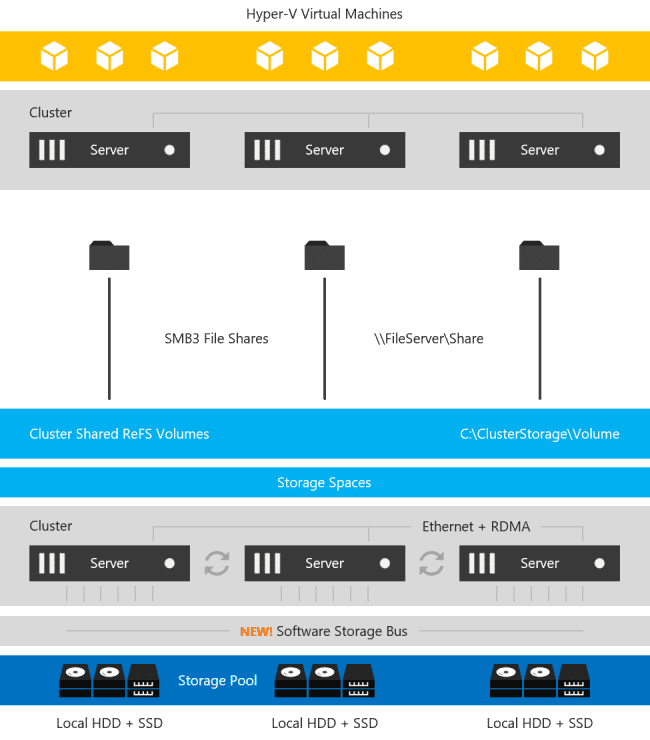A Windows Server 2016 hyper-converged deployment runs Hyper-V virtual machines or SQL Server databases directly on the servers providing the storage, storing their files on the local volumes. This eliminates the need to configure file server access and permissions and reduces hardware costs for small-to-medium sized businesses or remote office/branch office deployments.
Hyper-Converged

Storage Spaces Direct is the evolution of Storage Spaces, first introduced in Windows Server 2012. It leverages many of the features you know today in Windows Server, such as Failover Clustering, the Cluster Shared Volume (CSV) file system, Server Message Block (SMB) 3, and of course Storage Spaces. It also introduces new technology, most notably the Software Storage Bus.
Here’s an overview of the Storage Spaces Direct stack:

DataON S2D solutions are built to optimize the full stack of Microsoft Storage Spaces Direct in a hyper-converged platform. They combine high-performance NVMe SSDs with SMB3 networking to maximize performance and capacity. They also run on the Cluster Shared Volumes Resilient File System (ReFS) to maximize data availability, deliver high resiliency, and improve data integrity across scale-out file servers (SoFS) and software storage bus to storage and networking hardware. Learn more about DataON S2D solutions.

